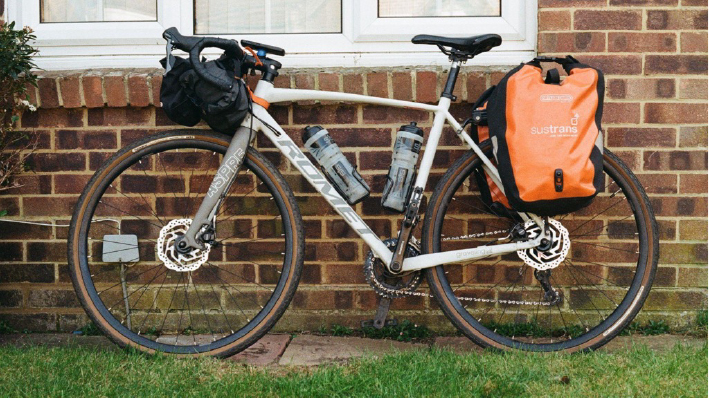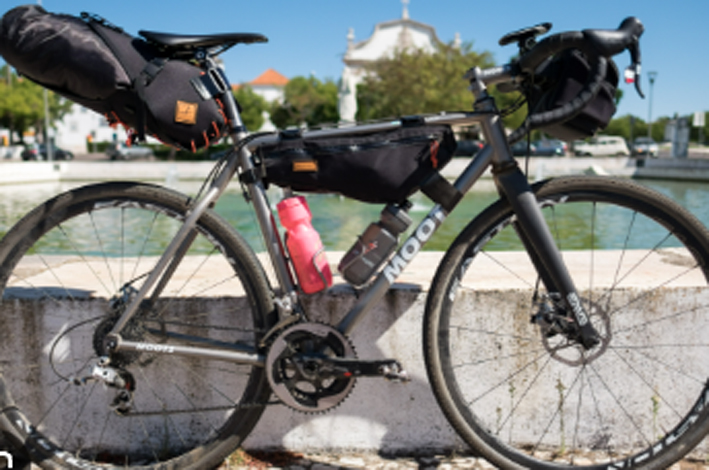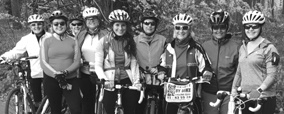Sit outside the Fisherman’s Cottage in Reading with a pint on a sunny Sunday and you’ll often spot cyclists passing on the canal-side path, bikes laden like pack mules.
Look closely at their faces and you will see a certain kind of grin reserved only for those who have achieved the purest state of independence and free spiritedness.
These are ‘bikepackers’. Bikepacking is the latest craze to hit the cycling world, accompanied by a proliferation of bloggers, influencers, and gear comparison websites.
Of course, bicycle touring is nothing new. People have been travelling long distances by bicycle in a self-supported fashion for as long as there have been bicycles.
An early pioneer in this regard was T. E. Lawrence who, before his famous adventures in Arabia, completed a 2,200-mile tour of France entirely by bike in the Summer of 1908. How he managed this before the invention of padded shorts and properly surfaced roads is anyone’s guess.
What is different now is the range of ultralight, packable gear and ingenious luggage solutions available at a relatively affordable rate. This makes it possible to travel much further in a self-supported fashion.

Specialised bags can be attached to the handlebar, on top of or below the top tube, to the seat post, and to the front forks.
And while classic pannier bags remain an excellent solution for entirely on-road touring, these alternative “frame-hugging” solutions allow one to distribute the weight equally across the bike, which massively improves manoeuvrability, essential if one plans to go off road (such as the 125 mile, Traws Eryri all-terrain mountain bike trail in Wales).
So, you want to try bikepacking yourself, but don’t know where to start? The first thing to choose is the bike, of course. To start out, a standard hybrid bike will serve fine. Just try to make sure it’s not too heavy, as you may occasionally have to carry it over turnstiles or up staircases.
For my first trips in the UK and the Netherlands, I used my middle-of-the-road commuter hybrid bike. This kind of bike is well suited to on-road tours, even with a bit of off-road gravel or towpath sections. For longer off-road tours, a suspension is essential, so a hard-tail mountain bike is advised.
After choosing a bike, it’s time to think about equipment. The gold standard is Ortlieb, the German manufacturer of the famous Back-Roller pannier bag. Ortlieb sell a variety of high-quality packs for attaching all over the bike. They are only matched in their careful craft and thoughtful design by the British newcomer Restrap.
Restrap even offer a custom frame-bag service so you can design your perfect luggage solution. Neither of these options are cheap – a handlebar bag alone can set you back £100 – but high-quality equipment can be easily resold, even after heavy use. Indeed, I have bought several Ortlieb bags second hand, in excellent condition.
Now we need to plan a route. Route planning for bikepacking follows much the same logic as any other bike ride, except that extra care must be taken for hilly and mountainous stretches. A full bikepacking setup can easily add 10-15 kg to the weight of your bike, which you will certainly notice when going uphill.
Beginners are advised not to plan more than 30 miles per day for hilly areas such as in the West Country or Wales. For flatter regions like the Netherlands, the extra weight will not be noticed much, so you can easily ride for more than 60 miles a day without too much exertion (provided there are no strong headwinds).
While there is a certain joy in starting and ending a tour on your doorstep, for most trips you will need to transport your bike elsewhere. If you have a car and a bike rack, you can drive of course, though this does limit you to circular routes.
For more interesting linear routes, one can take a train, a flight, or a ferry. Where available, ferries offer arguably the simplest means to transport your bike, as you can keep it fully assembled. Ferry services from Harwich, Portsmouth and Plymouth are all bike friendly, and allow you to reach the Netherlands, France, and Spain.
I am still very much a rookie when it comes to bikepacking, but already I have a few adventures under my belt. Late this March, two friends called Alex and I set out from Shaftesbury, Dorset, bound for Portland, where we planned to camp for the night. The ride started well: clear skies, smooth, quiet country lanes, and bucolic scenery.
As we approached the coast, the headwinds grew stronger and stronger until, just outside Weymouth, it felt like cycling up a 20% gradient. We arrived at Portland, with one final 100m climb to reach the campsite.

After a hearty fish and chip supper and a good night’s sleep in our tents, we were ready to return to Shaftesbury, taking in as many thatched villages and pub stops along the way as possible.
The ride ended with an epic climb back up to Shaftesbury (though I opted to push my bike up Gold Hill, one of the Alexes pedalled the entire way) before a celebratory curry. That’s what they call Type 2 fun!
Sam Hatfield



